Executive Summary
Samatoa is a social textile enterprise focusing on the values of fair trade and sustainable development to create an alternative to the textile industry. Creating the greenest and most innovative textile in the world, Samatoa was recognized in 2012 by the UNESCO Prize for excellence. The lotus fabric enables the creation of a workshop of 30 people with exceptional know how. The fabrics are innovative, 100 percent ecological, spun and woven by hand, following the Cambodian traditional methods giving them texture and unique properties. From these exclusive materials Samatoa develops different patterns and high-quality scarves and brings a new way for Cambodian women to empower themselves and “get out of the mud” and blossom, just like the lotus flower.
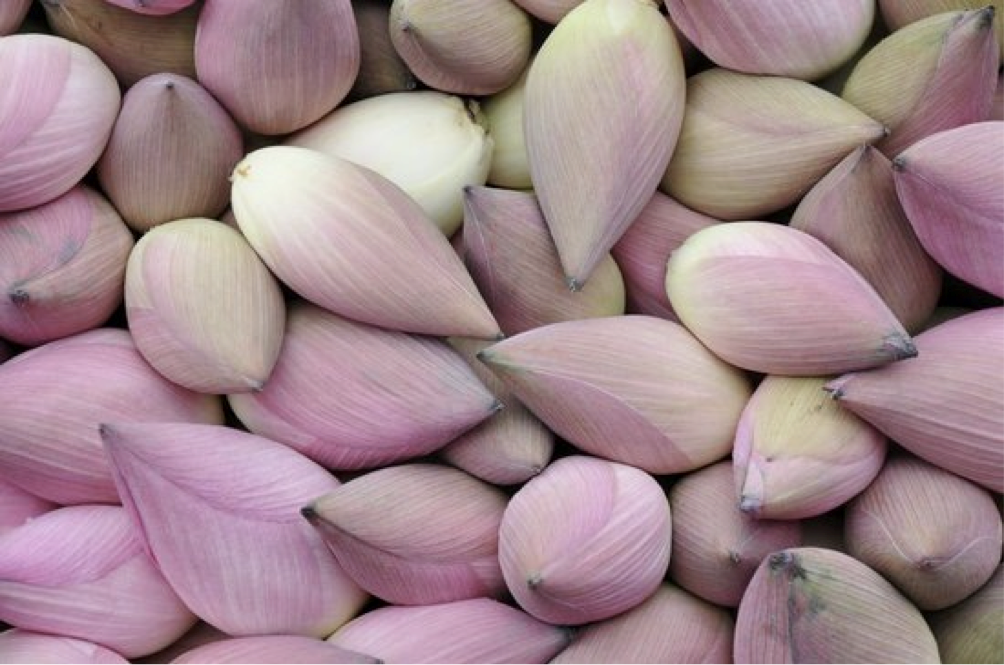
Lotus Buds
Source: SAMATOA
Symbolism of Lotus
In South Asia, the sacred Lotus is omnipresent in religious history. For Buddhists, beyond the fact that the lotus is considered a sacred flower, it’s a symbol of every man and woman’s ability to surpass their conditions no matter their origin, and accomplish themselves, just like the lotus flower growing tall until it floats above the muddy waters. Everyone has the potential to elevate themselves and reach Buddha’s state “without letting the world pollute them, like a lotus on water” as cited in the Lotus Sutra, one of Buddhism’s most important educational texts.
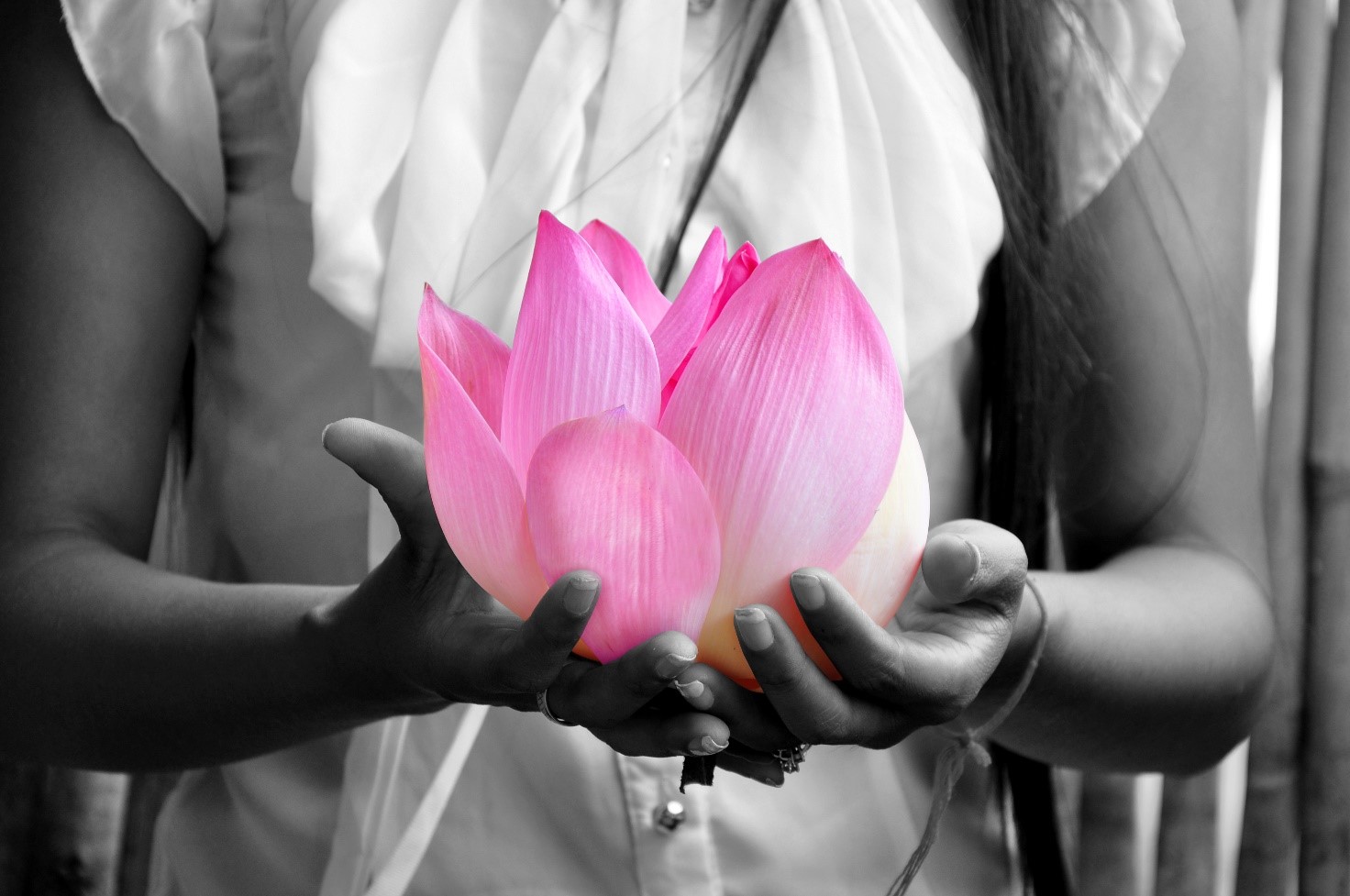
Spiritual Lotus Flower
Source SAMATOA
The plant on which Buddha is frequently seen sitting, expresses all the promises of the future and of becoming a better man. For decades, the flower has been identified as a symbol of wisdom and spirituality. We can equally read the Lotus Sutra as an encouragement to actively engage in others’ lives as well as society. The lotus flower is unlike any other flower. It grows in rough conditions as it is surrounded by mud under the water. The lotus seems to be fragile, but it is flexible and strong, and finally gets out of the muddy water to open itself to the world and become a beautiful flower.
Samatoa believes in the symbolic strength of the Lotus Sutra and is using the same positive and humanist dynamic on which it has developed its economic, social, and environmental project, allowing vulnerable women from small Cambodian villages to become autonomous, to live and to support their family decently.
There is a popular Asian saying that “a pond without lotus is like a home without women.” Indeed, the lotus still is important in the daily life of Cambodian people. Used in religious rituals, and in domains like medicine, cuisine, and cosmetics the lotus is far less known for its’ textile use. Once worn by Buddhist monks the weaving of lotus fiber was once known and used across South East Asia.
However, this activity has begun to fall into obscurity. Only the inhabitants of Inle Lake’s floating villages have continued to perpetuate this ancestral craft. Day after day, Samatoa brings lotus fabric back to life guided by its symbolism. For Samatoa, the lotus represents the culmination of the company’s ultimate quest for excellence.
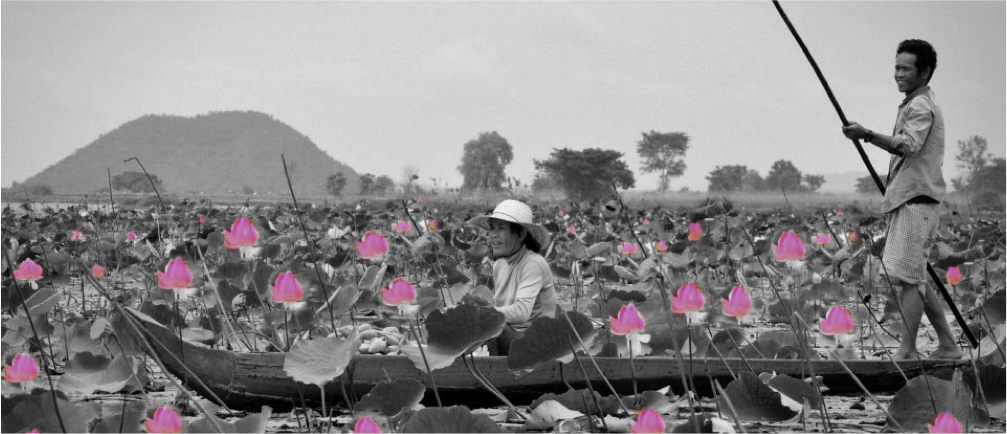
Lotus Field
Source: SAMATOA
History of Samatoa
In 2003, Samatoa established the foundations of a solid fabric composed of the best experts in biotextiles and ethical fashion by becoming a social textile enterprise focusing on the values of fair trade and sustainable development to create an alternative to the textile industry. Creating the greenest and most innovative textile in the world, Samatoa was recognized in 2012 with the UNESCO Prize for excellence. Its unique lotus, silk, kapok, and banana-based fabrics have become increasingly popular amongst international designers in ethical fashion and luxury industries.
Awen Delaval, a Frenchman at the heart of a fair-trade promotion association, was exposed to (and toughened by) the poverty in Cambodia during a trip to Asia. He then had the idea of developing natural textiles and bringing the industry back to life in Cambodia. Seduced by the teachings of the Lotus Sutra he created an itinerary in the same humanist vein.
In 2009, he was introduced to the art of robes made from lotus fibers worn by Burmese monks during an annual celebration. As a designer of ecofriendly textile, he pursued this craft, setting up a laboratory at his Siem Reap home in search of the perfect lotus to create the unique fabric. Setting his eyes on a spectacular 15-hectare lotus lake at Kamping Poy (near Battambang), Awen knew he had found his nirvana.
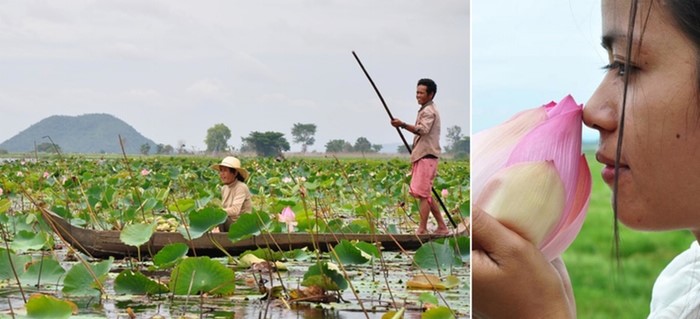
Lotus Lake
Source: Samatoa
Based in the city of Angkor, he is surrounded by historic spirituality. The lotus appears as the cornerstone of his project, offering symbolism, nobility of soul, beauty, and purity.
What new symbol can we find, with its millions of fibers, living in lakes and rivers? Once worn by Buddhist monks, it’s now seducing high fashion’s biggest names.
For 10 years, Samatoa experimented with more than 10 local natural fibers: lotus, pineapple, banana, water lily, romchek, kapok, papyrus, palm, silk, coconut, water hyacinth, and rice leaves. During this search, he also developed a team of expert spinners, weavers, seamstresses, and designers. The innovative fabrics are 100 percent ecological, hand spun and woven, following traditional Cambodian methods. This gives them a unique texture and properties available nowhere else on the planet, which are now in demand around the world.
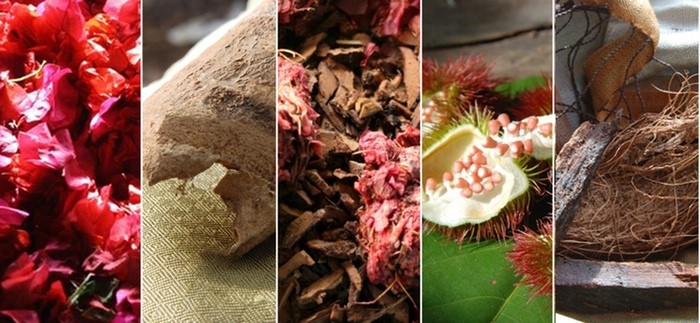
Samatoa uses eco-friendly pigments, using ones that don’t harm the environment and are non-polluting Natural Raw Materials.
Source: Samatoa
Our Lotus Fabric
Experiment after experiment followed by research conducted in remote villages enabled Samatoa to bring back to life long forgotten skills. Thousands of years ago, the art of creating lotus fabric was known, but then lost. Lotus flowers have been harvested in Cambodia for generations, but only the flower. The stems -- the valuable stems -- were left in the water. What a waste! We now harvest the stems and weave our lotus fabric from them. Lotus fabric has unique properties: it is naturally soft, light, especially breathable, and almost wrinkle free. It is also a very eco-friendly fabric containing no chemicals or toxic products. It’s probably the most ecological fabric in the world. We transform a waste into a quality textile that doesn’t use any polluting energy during any of the process.
Starting with this uniquely soft and breathable fabric, we developed the first prototypes of our new collection. Our fabrics are all made possible thanks to the skills of our artisans who possess unparalleled know how resulting in strikingly precise and detailed creations.
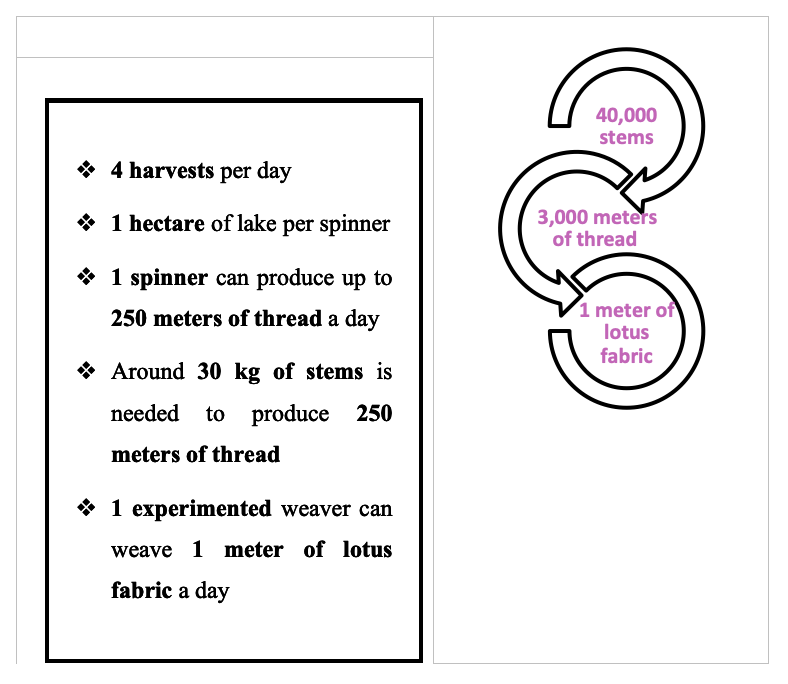
In 2012, we submitted a sarong, made from our unique lotus fibers to the UNESCO handicrafts program and received their Seal of Excellence. The Seal “encourages artisans to produce handicrafts using traditional skills, patterns, and themes in an innovative way in order to ensure the continuity and sustainability of these traditions and skills.” The award is a sign of the craft expert jury’s recognition of high-quality materials. Upon receiving the Seal of Excellence our lotus fabrics have received a great deal of attention from designers all around the world.
Why a Social Innovation?
The basics of the Samatoa model rely on the belief that sustainable economic development is intrinsically linked to social equity and environmental protection. No source of polluting energy, no chemical or toxic substitute, and no heavy metal is used in the manufacturing process of lotus fabric with the greatest respect for nature. This fully integrated model allows Samatoa to ensure the quality from yarn to the finished product, without any intermediary. Thanks to the pilot as the only duplication of the production of the lotus fabric, Samatoa wants to multiply its production capacity by 10 within five years.

100 percent handmade process from extracting the fiber from the plant to making a unique yarn
Source: Samatoa
From mid-range to luxury, Samatoa affects professionals in textile and fashion, and individuals through an innovative model with high added value. The lotus products are already distributed to the famous players in fashion, such as those at TTTT in Hong Kong (founded by Sir David Tang), the Tang Store in Singapore, and designers in the United States, Europe, and Australia.
The Samatoa team is multicultural, committed, and dynamic with a low turnover. It is rich from 10 years of experience in research and the development of ecofriendly fabric, and today consists of 30 experts: spinners, weavers, seamstresses, and designers.
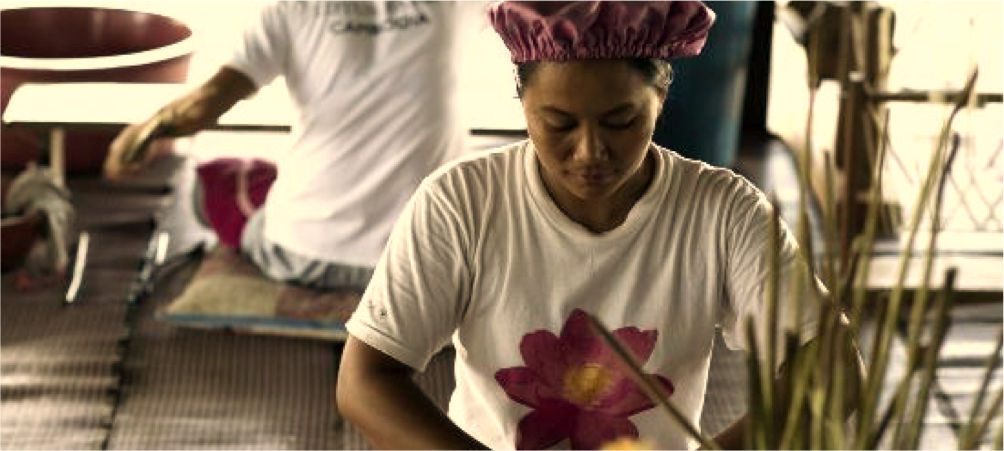
Spinner Woman at the Lotus Farm
Source: Samatoa
Eco and Social Business
The lotus fabric, the most spiritual fabric in the world, allows the emancipation of 30 vulnerable Cambodian women. Samatoa uses the best socially responsible manufacturing techniques to create eco fabrics that support women’s empowerment in Cambodia. Our aim is to duplicate the workshop pilot project in Siem Reap and increase production capacity.
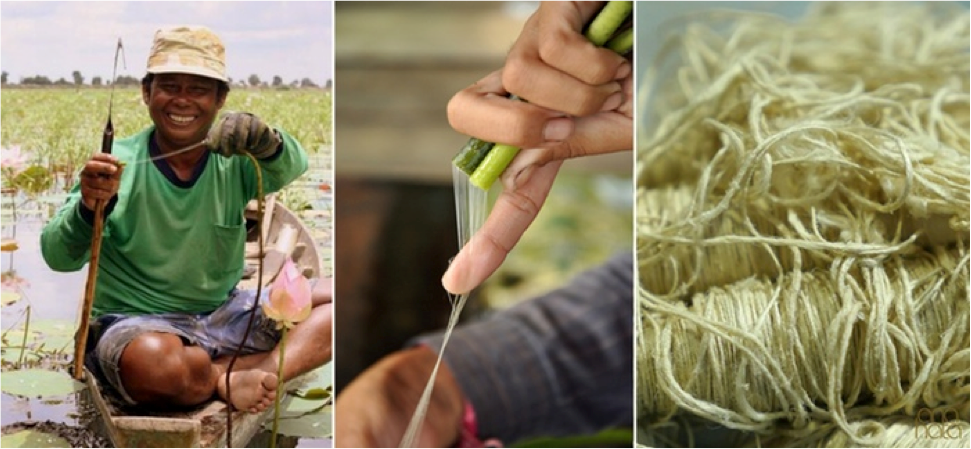
Handmade Cambodian craftmanship, extracting and spinning Lotus fiber
Source: Samatoa
The impact of expanding our eco-textile company will be considerable for a variety of reasons. First, of course, we will provide more than 500 women with long-lasting employment. We will ensure that these local handicrafts using new eco-fibers are made in traditional ways that will never be forgotten. Poor communities will benefit from the market for Lotus and education for farming, and lotus farming works in parallel with rice farming.
Preserving the environment, paying people fairly, and treating each person with respect and dignity are our prerequisites for a sustainable fashion business. All our workers are paid a living wage, have trade union rights, paid leave, and health insurance, not to mention a safe working environment.
Our fibers are also incredibly friendly to the environment. The extraction, spinning, and weaving of the lotus fiber, consume no polluting resources such as oil, electricity or gas; and do not require any toxic chemicals. Social and environmental benefits and economic value are given to growing lotus and environmental conservation is taught to farmers. There is zero environmental impact in our process. The use of lotus benefits nature and humans. Vegetal plants clean the water (phyto), provide foods for humans and animals (textifood), and protect animals (ecosystem). Therefore, the basics of the Samatoa model rely on the belief that the most sustainable economic development is intrinsically linked to best social, environmental, and economic practices.
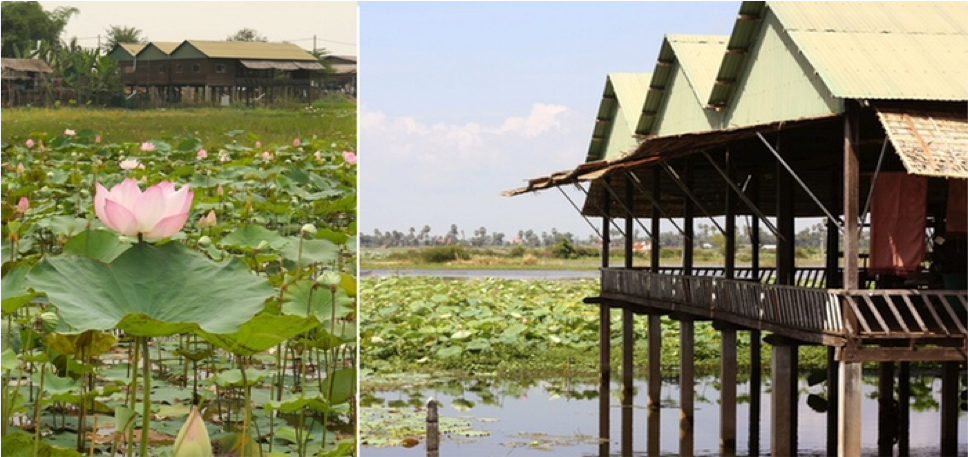
Our experimental farm in Phnom Krom Siem Reap, Cambodia
Source: Samatoa
We believe that eco-fashion is defined not just using natural fibers, but also by using fair-trade Cambodian labor in every step of a sustainable fashion supply chain.
It’s with great pride that Samatoa bridges the gap between the rich and the poor using fair and ethical commerce, allowing formation, emancipation, and international recognition of our producers, to offer a chance to each man, and consequently vulnerable woman, to surpass their condition and elevate themselves, to accomplish “like the lotus flower growing above the muddy waters.”
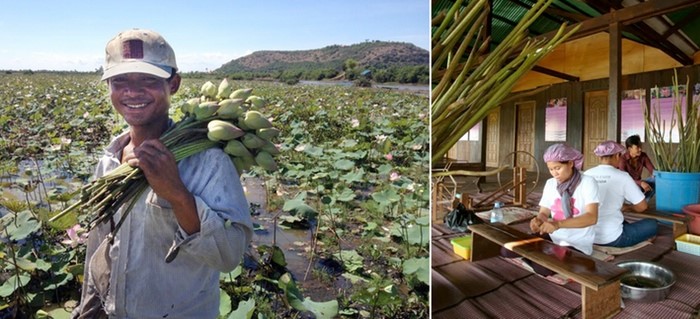
Farmer and weavers at a lotus farm
Source: Samatoa
Obstacles, Risks, and Opportunities
Low production capacity and long lead time (from six months to a year) discourage many customers. Samatoa, then, only responds to a fraction of client requests (less than 10 percent). The risk for the company to be copied is very high and it is urgent to protect its innovation and trade secrets. However, this threat is limited because the "sacred" lotus flower (Nelumbo Nucifera) is only available in a few countries. On the other hand, the competitive price of labor in Cambodia, the complexity of the process, and the expertise gained over the years by Samatoa create significant intellectual benefits to the company and limit the implementation of a similar project.
Today the demand is soaring, and the company must support its growth to achieve sustainable development. Samatoa wants to win market share by responding in priority to requests for fabric lotus and create the necessary leverage to advance its overall growth. Samatoa is responsible for the manufacturing processes from beginning to end -- from yarn to finished product -- with no intermediaries or outside providers. This is how we ensure the quality of all our products.
Therefore, the spiritual foundations of Samatoa, the search for excellence and the confidence of the quality of our products gives us courage and confidence in the future of our product.
For more information contact Awen Delaval, GM of Samatoa at +88512285930 and by email at This email address is being protected from spambots. You need JavaScript enabled to view it.. To shop Samatoa visit: www.samatoa.com or www.facebook.com/samatoa.eco.
Videos about Samatoa can be accessed at www.youtube.com/watch?v=aSndEFq3BhU (English V) and www.youtube.com/watch?v=WGzIJ9Kj_sY.
Author bio
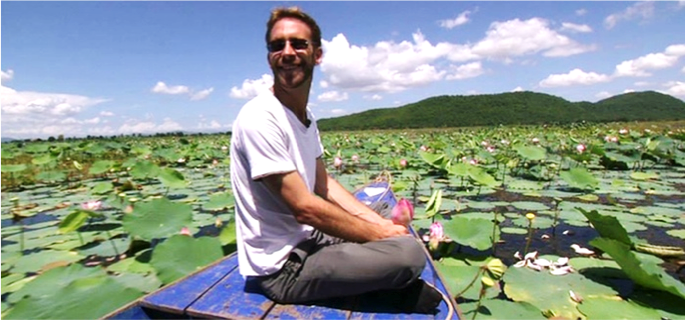
Awen Delaval. Founder of Samatoa in the lotus field.
Source: Samatoa
Awen Delaval, a Frenchman at the heart of a fair-trade promotion association, was exposed to (and toughened by) the poverty in Cambodia during a trip to Asia. He had the idea of developing natural textiles and bringing life back to Cambodia’s textile industry. Seduced by the teaching of the Lotus Sutra he created an itinerary in the same humanist vein.
In 2009, he was introduced to the art of robes made from lotus fibers worn by Burmese monks during an annual celebration. As a designer of ecofriendly textile, he pursued this craft, setting up a laboratory at his Siem Reap home in search of the perfect lotus to create the unique fabric.
Setting his eyes on a spectacular 15-hectare lotus lake at Kamping Poy (near Battambang), Awen knew he had found his nirvana.


